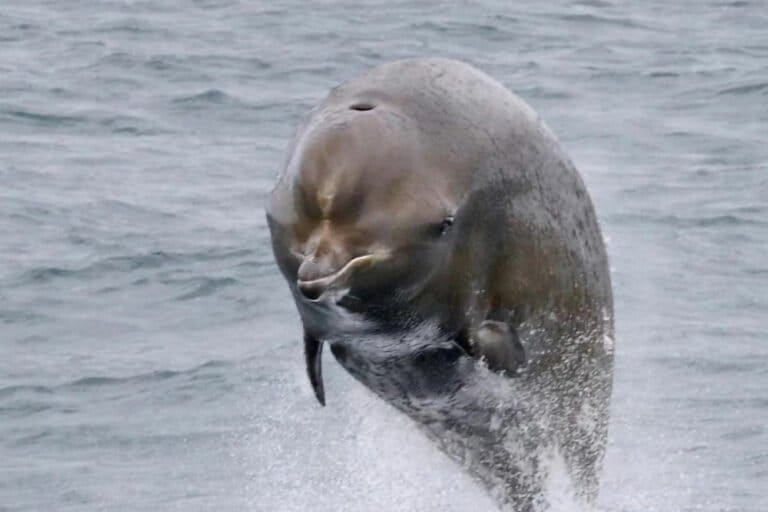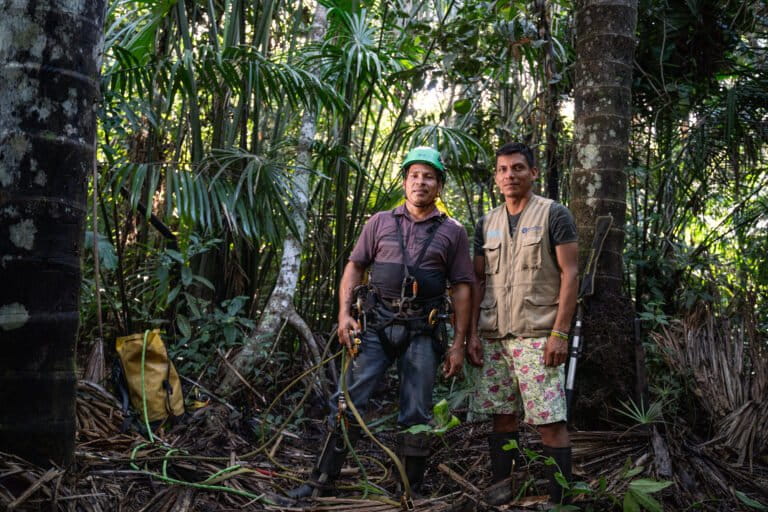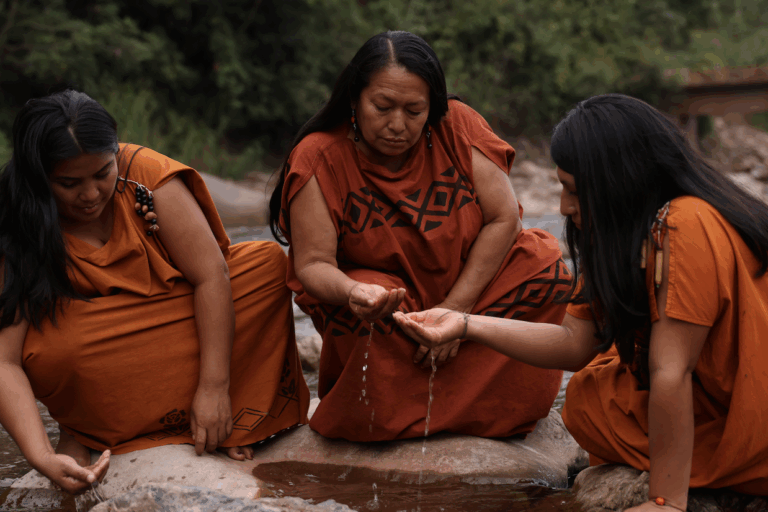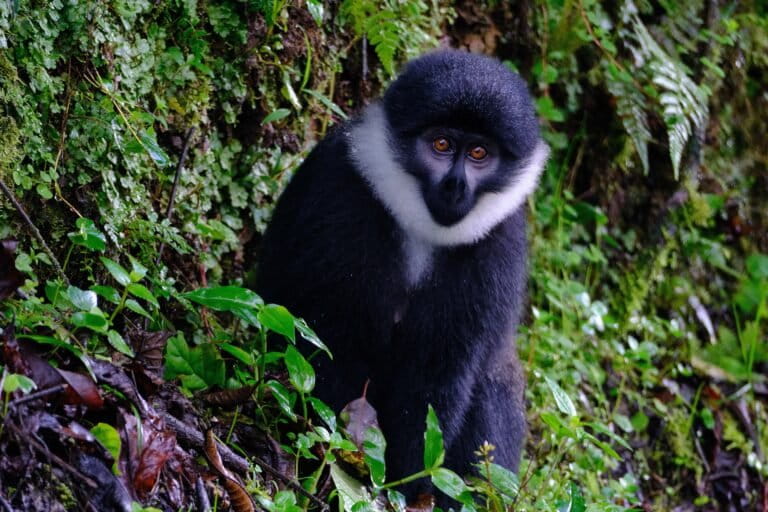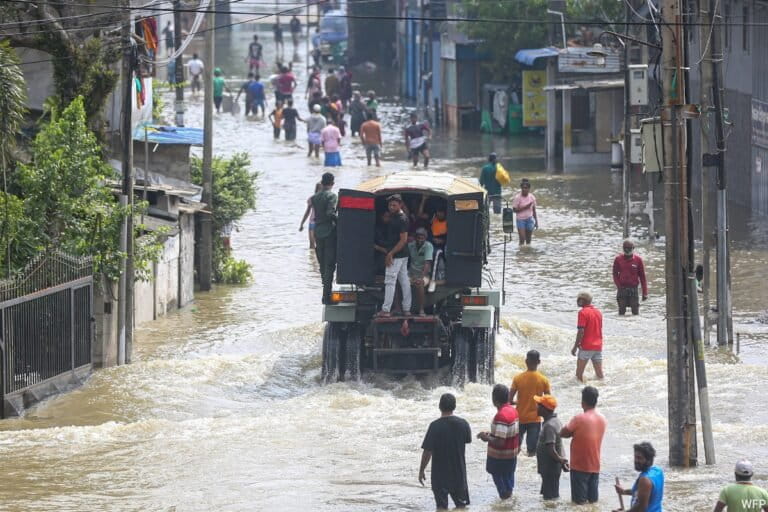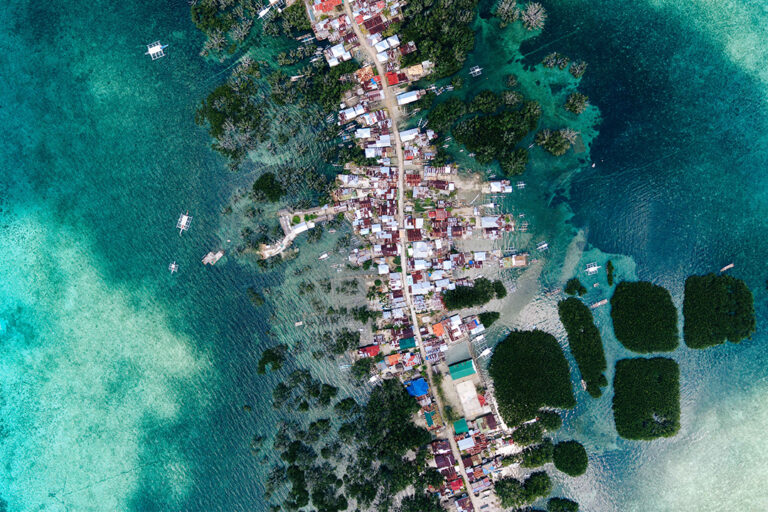- In one of the most biodiverse spots on earth–the Yasuní Biosphere Reserve in Yasuní National Park – species are still being discovered.
- A first-of-its-kind study was conducted in the area was captured in the film “Yasuní Man,” released in 2017, which can now be found on streaming services. The zone where they filmed is set aside for the Tagaeri and Taromenane, two Waorani clans living in voluntary isolation.
- The region in which the survey was carried out is largely unexplored, and is in a transition zone between bird faunas in northern Peru between the Marañon/Amazon river and the Pastaza/Napo drainages.
- While there are research stations in the northern part of the area, the southern edge of the park and the intangible zone are difficult to access.
A first-of-its-kind study conducted within the Yasuní Biosphere Reserve’s Intangible Zone (IZ) in Ecuador and captured in the film “Yasuní Man,” can now be found on streaming services. The zone is an area set aside for the Tagaeri and Taromenane, two Waorani clans living in voluntary isolation. Yasuní Biosphere Reserve is one of the most biodiverse spots on earth–and while there are research stations in the northern part of its area, the southern edge of the park and the intangible zone are difficult to access.
Since being released in 2017, the film festival circuit gave “Yasuní Man” 35 official selections, 23 award nominations and 15 award wins. It was screened in 15 states in the U.S. and 16 countries. It’s also been translated into 9 languages. A partnership with the United Nations CINE-ONU was also formed, as well as a worldwide distribution streaming deal with Journeyman Pictures.
The region in which the survey was carried out is largely unexplored, especially during modern times. It is in a transition zone between bird faunas in northern Peru between the Marañon/Amazon river and the Pastaza/Napo drainages. These two areas share many species, but also are different in ways that are not yet fully understood, especially where species turnover occurs.
Mongabay spoke with some of the research team members about their work and what’s next.

Tell us about your collaboration with Amazon Watch?
Through a distribution deal with Journeyman Pictures out of London, “Yasuní Man” is now available on a streaming platforms on iTunes, Amazon, GooglePlay and Vimeo. I’ve made an arrangement with Amazon Watch to give a portion of our proceeds to the Amazon Emergency Fund in exchange for helping us share the release. Amazon Watch is managing the AEF rollout and also targeting all of the celebrities from Artists United for the Amazon.
What is the film about?
“Yasuní Man” deals with a conflict raging deep within the Ecuadorian Amazon. Through the film, we see the Waorani people battle industry operatives and their own government in a fight to survive in the most biodiverse forest on the planet.
You had some success with the rapid inventory done in the film – can you share about that?
The rapid inventory conducted in the film yielded amazing results. We found more diversity in Boanamo than the other larger and better funded inventories done in the surrounding areas. Our Birds of Boanamo report is published on the online journal Neotropical Biodiversity, and our Mammals report was just accepted and published in Mammalia (August, 2020).
Our research was part of a larger biotic inventory created and funded by Pollywog Productions as part of the documentary feature film, Yasuní Man, and carried out in cooperation with the Waorani communities of Boanamo and Bameno.
Can you describe the team’s rapid inventory work process?
In the process of a poorly-funded and relatively short survey of just 16 days, we were able to confirm that the biodiversity in Yasuní increased by four species – one mammal, one fish, and two frogs. I think the biggest thing that came from it is that our study shows how little we actually know.
We also need to compare our entire species list to the current total. We expect to add a few more to Yasuní ‘s species diversity list. This data doesn’t take into account our fungus and plant studies. We may have new species to Yasuní and to science in both of those categories.
Tell us a little bit about the other folks on your team?
The team consists of filmmaker and producer Ryan Killackey, ichthyologist Cecilia Puertas, botanists Efrain Freire and Diana Medina, mammologist Diego Tirira, herpetologist Morley Read, mycologist Larry Evans, and ornithologists Harold Greeney and Domingo Gualinga. Also, Tomi Sugahara, Otobo Baihua, Conan Omaca, and all the Waorani communities of Boanamo and Bameno that supported the film and the research, which would have been impossible without them.
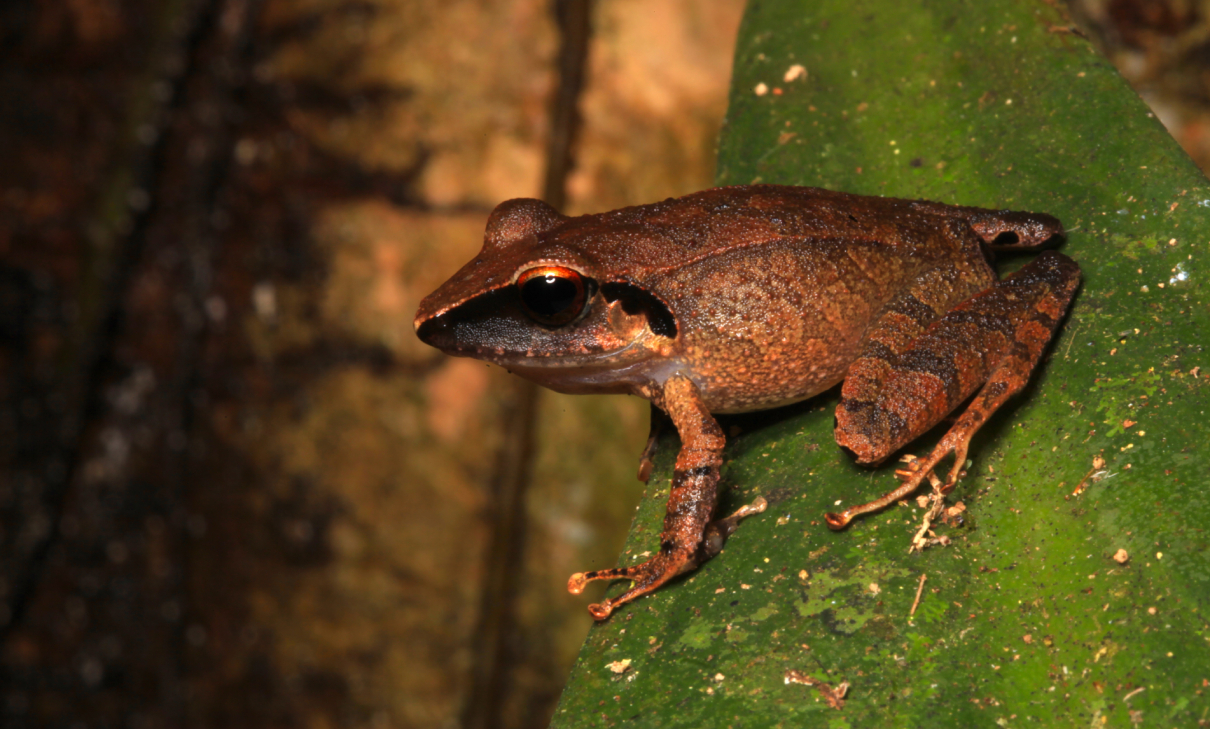
Research done for the film ended up leading to significant findings, can you share a little about that?
The research has been published in a number of scientific journals and we had some big finds. They included the first records of the nesting behavior of one bird, two new subspecies in a frog clade pristimantes. There was also the confirmation of a new frog species being a distinct – O. vilmae. Our team recorded the first instance of a bat that is new to Ecuador and Yasuní, and with a range extension of 550 KM. We also discovered a new fish species.
Can you describe one specific finding/experience?
The area near Boanamo helps fill some of these distributional knowledge gaps. As no one had conducted reptile and amphibian surveys in the area I had no idea what to expect. The discovery of a population of Osteocephalus vilmae was also significant. We found several individuals of this large tree frog calling at the edge of a forest stream. This species was only formally described 10 years ago and few specimens have been found. Its behavior in the field and call were completely unknown. Moreover recently this species was declared to be invalid and the specimens really belonged to a similar looking species Osteocephalus buckleyi. Now we have a recording of the call, we can compare it to the very different call of O. buckleyi and show that it really is a distinct species.
What were some other discoveries?
The team found jelly mushrooms that had been eaten by a mollusk had several sightings of rare entomophagic fungi growing on flies and katydid eggs. They also discovered of a population of Osteocephalus vilmae when they found several of this large tree frog calling at the edge of a forest stream. This species was only formally described 10 years ago and few specimens have been found. Its behavior in the field and call were completely unknown. Moreover recently this species was declared to be invalid and the specimens really belonged to a similar looking species Osteocephalus buckleyi. Now we have a recording of the call, we can compare it to the very different call of O. buckleyi and show that it really is a distinct species.
We were also able to study the nests of two species of birds that previously did not have published information on their reproductive habits or even a description of what their nests and eggs looked like. The Black-throated Brilliant (Heliodoxa schreibersii) and Striped Woodhaunter (Automolus subulatus). The information we gathered completed studies on these two species that I have carried out over the past decade, allowing the first ever descriptions of the nest and eggs of these species to be published.

What is next for the team and the film?
There are still many unresolved questions stemming from our last visit, two members of the Poison Frog family Allobates insperatus and Allobates femoralis had different calls and patterns than I had observed elsewhere in Yasuní . These are likely to be further examples of cryptic species. My personal research involves making sound recordings of frog calls, each species of frog has its own distinct call, and once they are known it is easy to determine what species of frogs are present at a site just by listening to their calls. While I have documented the majority of the species, to record the rarer ones, or those that call only occasionally, will require much more time in the field.
What conservation efforts/initiatives are needed to protect the Yasuní biosphere in the future?
The government needs to be pressured not to build any more roads, to establish ecological corridors, to ban hunting and fishing (for the non-ethnic groups) and to reinforce the law. There also needs to be an increase in the number of park guards (instead of firing them). To increase funding and support in the area to conduct research. Including the reduction of bureaucratic obstacles in order to obtain an investigation permit. Avoid the opening of highways or any access road is critical. Providing environmental education and strengthen local governance is paramount.
Why was it important to work with the Waorani on the study?
The Waorani know every stream, every path, and ancestral fishing techniques such as using the fishing technique of crushing barbasco, a root poison, and submerging it in the water. The Waorani culture harnessing a huge amount of unwritten knowledge. To see the matter of fact day to day interactions of the Waorani people with the jungle environment informed my own behavior. Their sense of the opportunities and hazards of their complex environment was key to finding unique mushroom habitats, and the way back to camp.
What kind of challenges did you encounter while getting a streaming deal over last 3 years, since your award in Jackson Hole?
After 30+ film festivals, 23 award nominations, 15 award wins, selling out the majority of our screenings and earning a partnership with the United Nations CINE-ONU, I thought that I built the demand for the film to get a good distribution deal. I was wrong. Being a first-time feature filmmaker, I didn’t quite know what the process was for getting distribution, an agent, a sales rep and help with PR. Most of that I’ve still been unsuccessful with, ie. an agent and sales rep.
How has the pandemic impacted all of this so far?
Once the pandemic hit and video streaming increased by 60% because of quarantine, it was an opportunity to get the film into homes. We hit the ground running and found a new distribution deal with Journeyman Pictures and their team had a plan of how to sell it.
What’s ahead?
We’ve reversioned the film to a 52-minute cut made for a broadcast audience. It was hard to do, but we removed some of the more graphic scenes, and trimmed out 38 minutes (from a 90-minute original). The good news is that the streaming option available since August 25 is the full version, the version I intended an audience to see.
What kind of support has there been?
For the film’s release, over 25 NGOs, the majority of film festivals we appeared in and a handful of celebrities to share video testimonials, messages on social media, and through their newsletters and blogs. This really has been a grassroots effort.
What are some things your team will do with this new information?
Two reports [about our biodiversity, fungus, and plant studies] are our next publications to focus on. These numbers are likely reflective of how little research has been conducted in Yasuní, and it shows with more studies, the species count will increase. Also, our study didn’t take into account the diversity of insects, which was not possible with my resources.
How will you continue to build on the work you’ve already done?
There will be a total of eight published reports from the Rapid Biological Inventory conducted in the film. The fish and herp reports will likely be published by the end of the year. Two are already published on mammals and birds, two have been submitted for publication on herps and fish, and another four are in progress.
We also plan to do a “Yasuní Man 2” in 12 years to see how things have changed over a 20-year period.
Banner image: Undescribed Corydoras Species. Image ©️Cecilia Puertas-Donoso.







